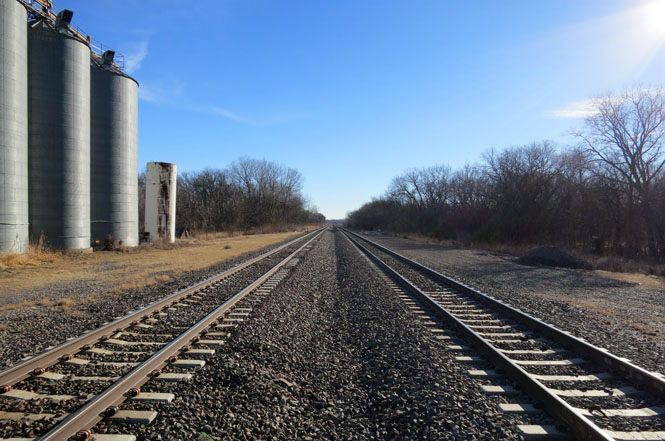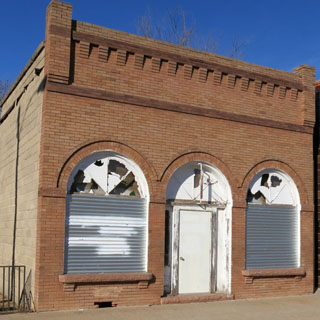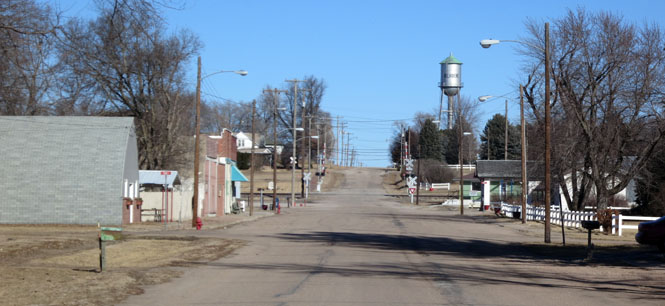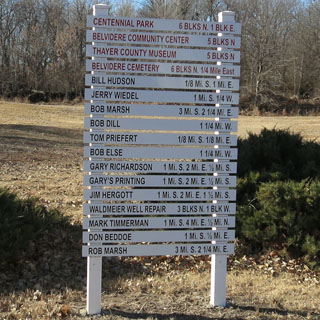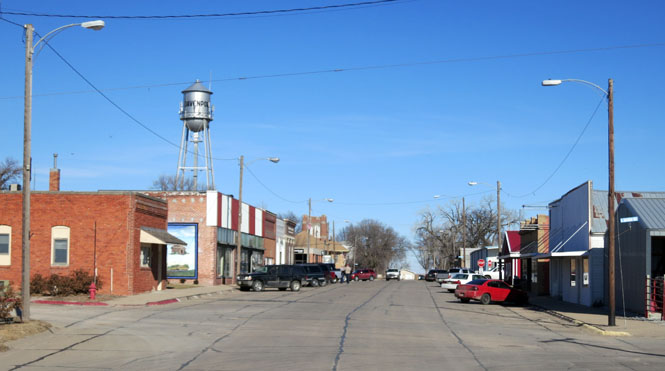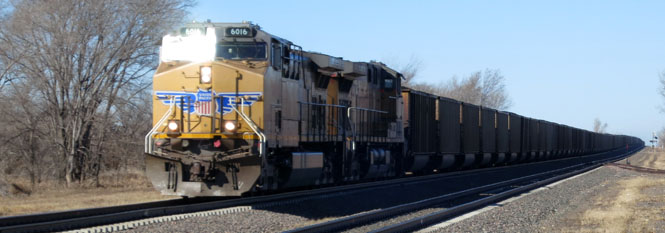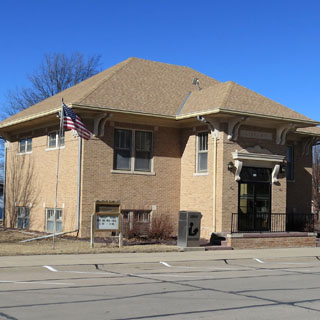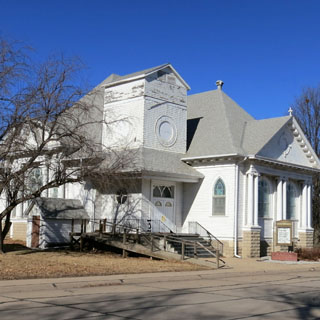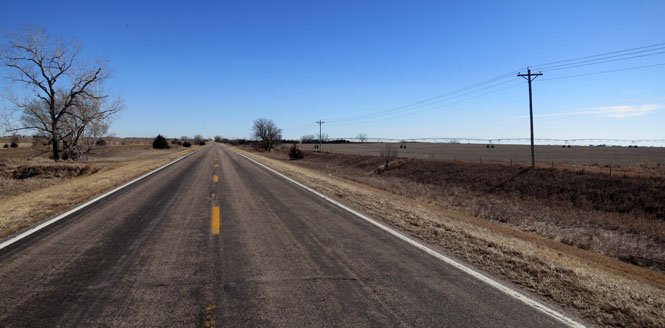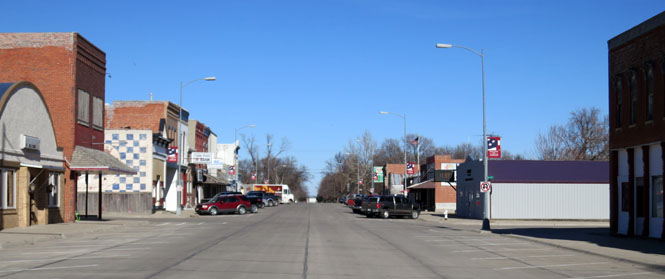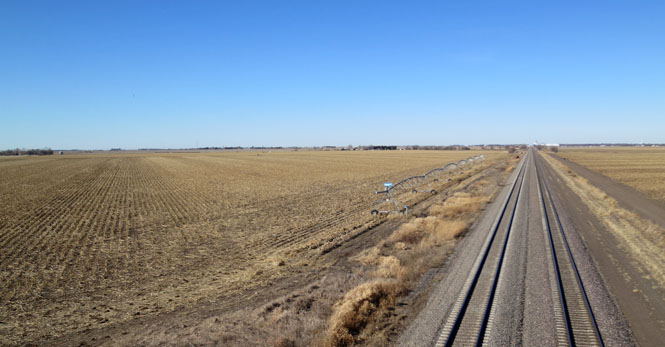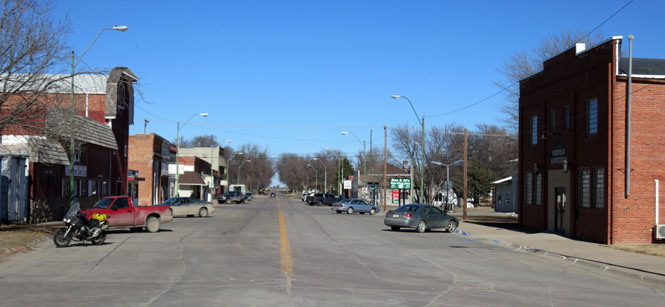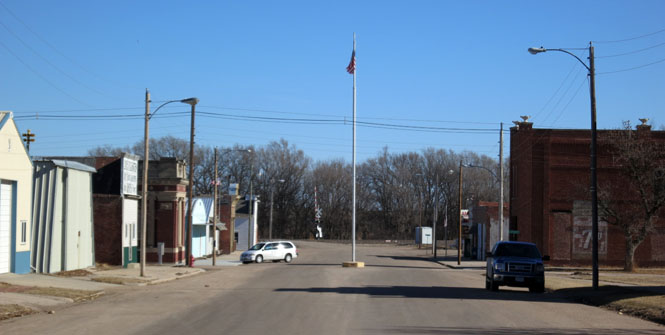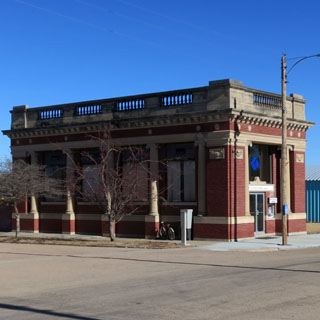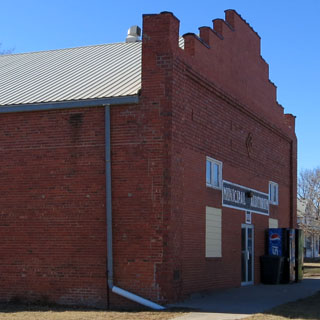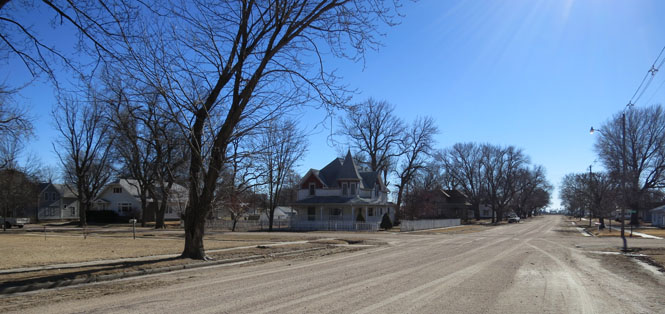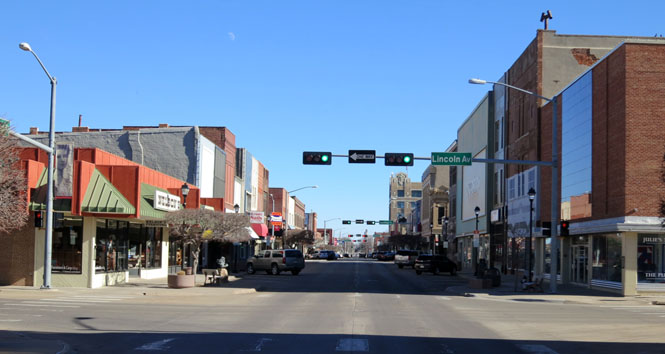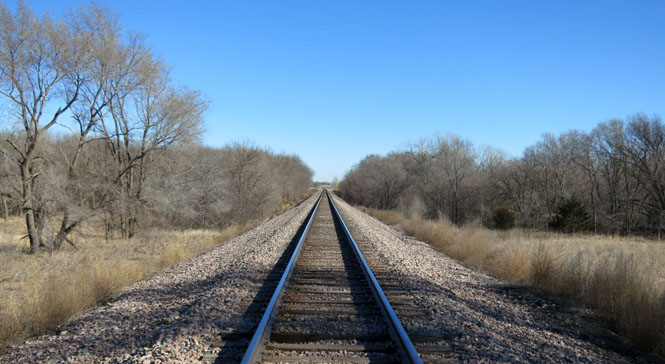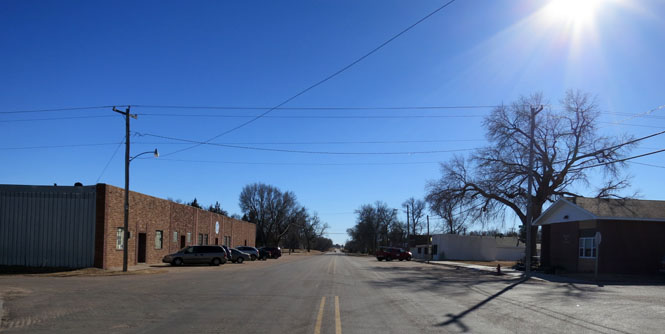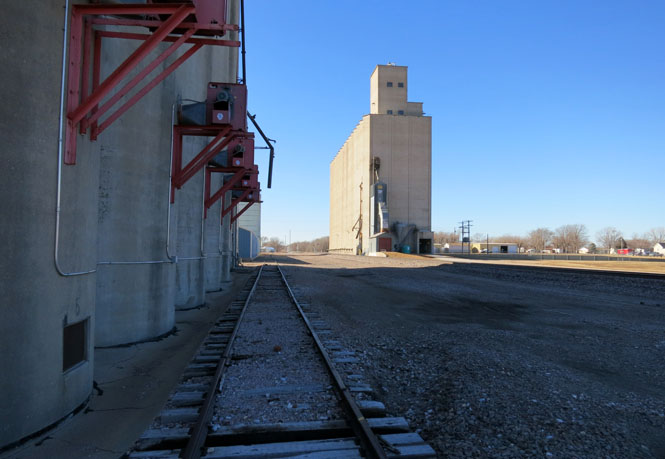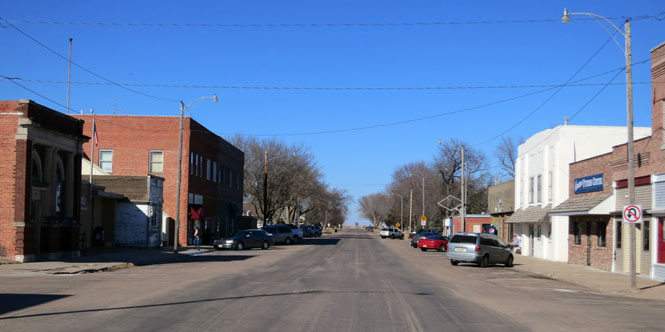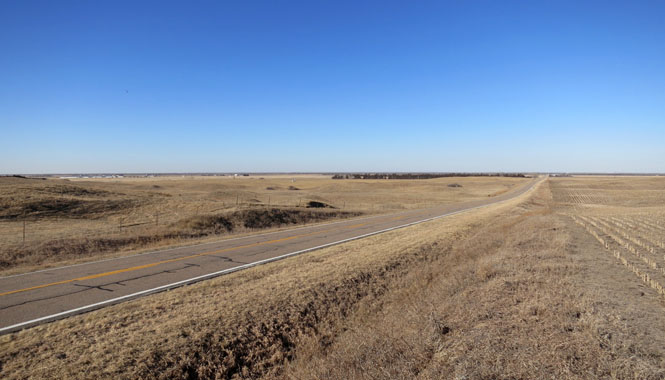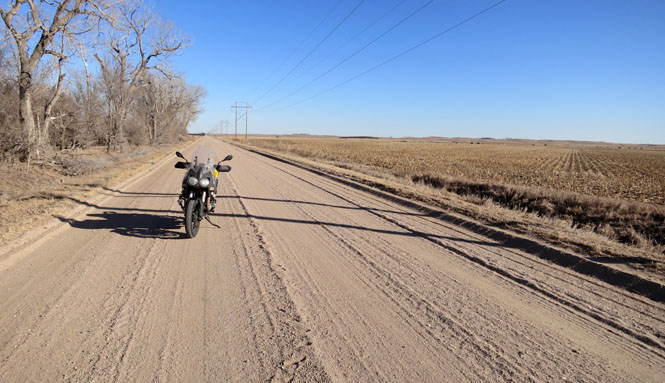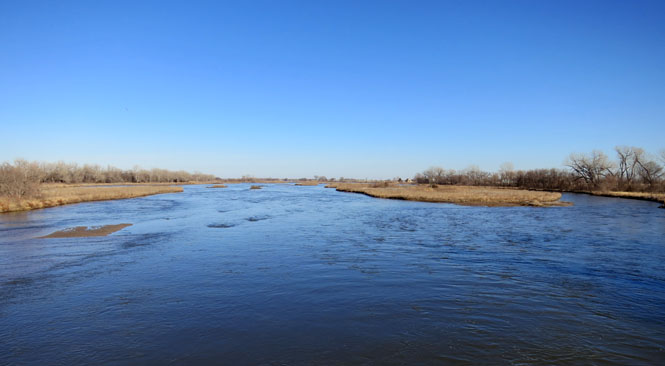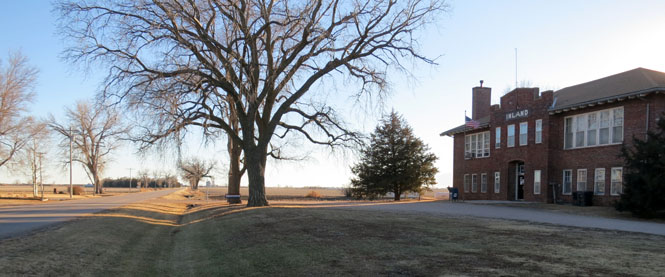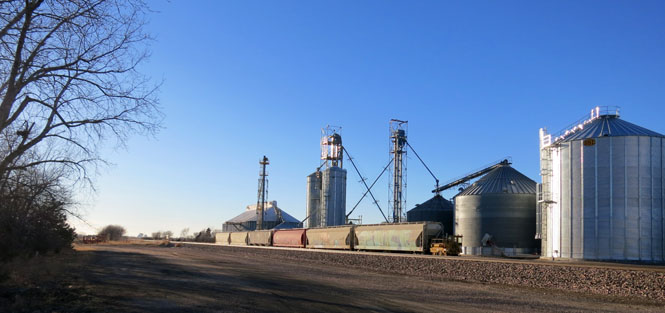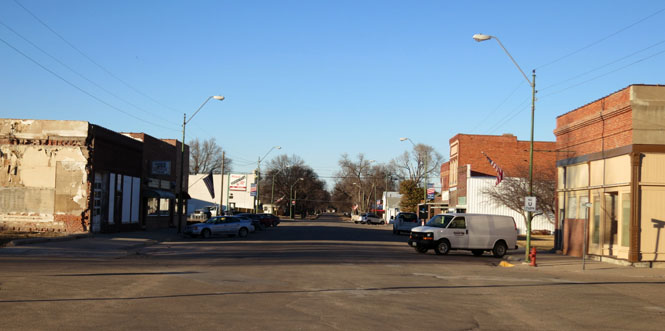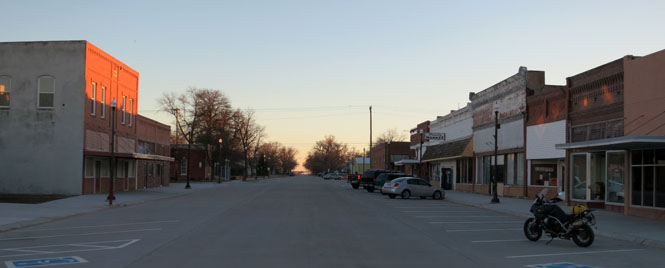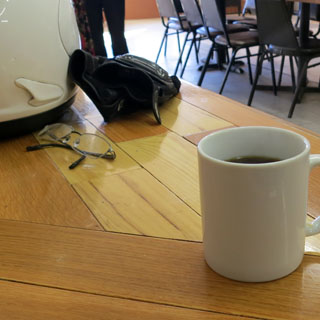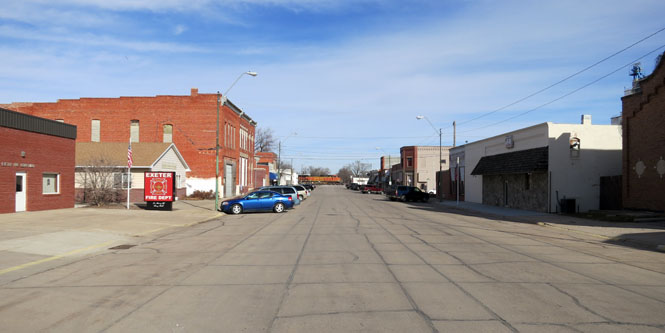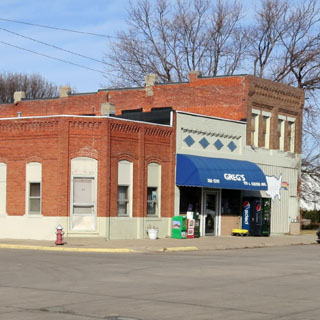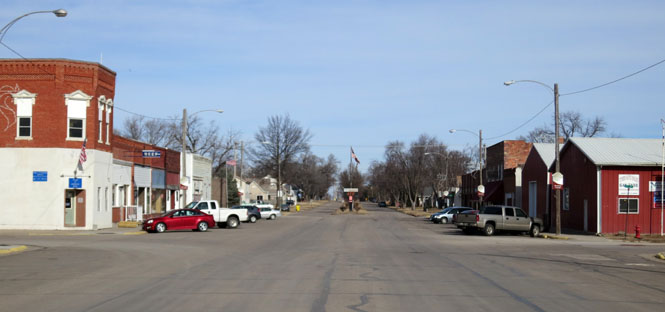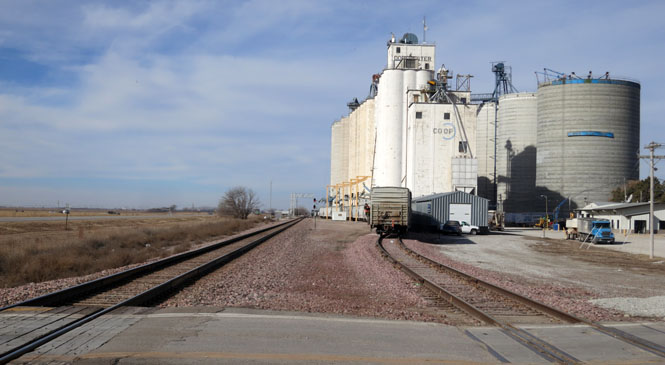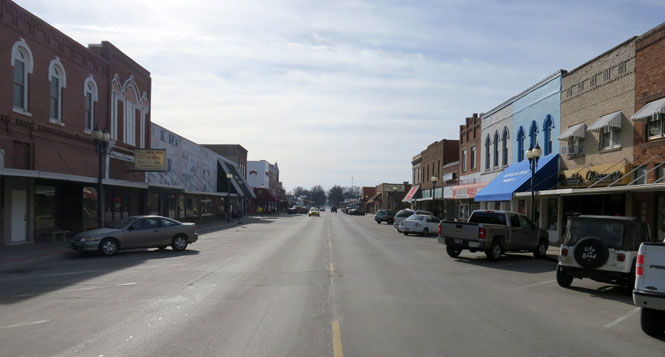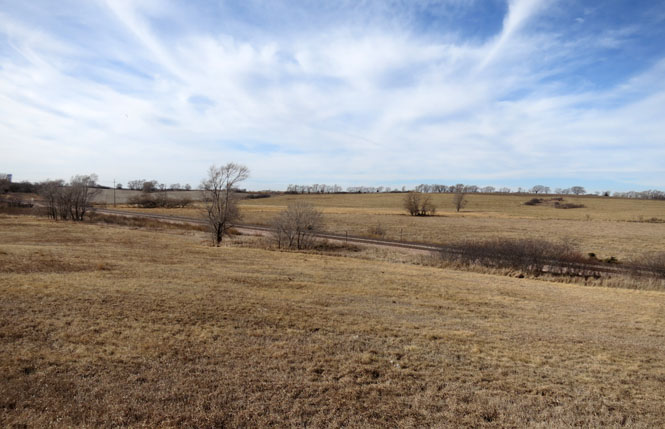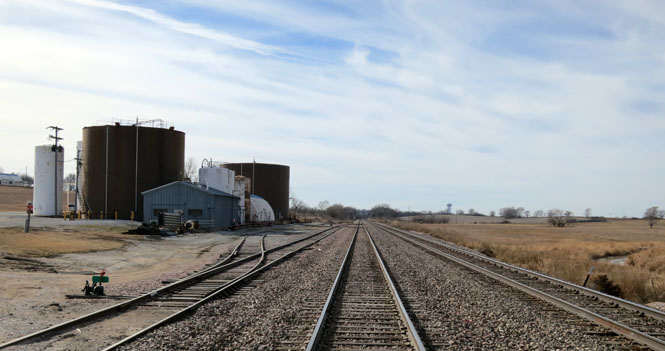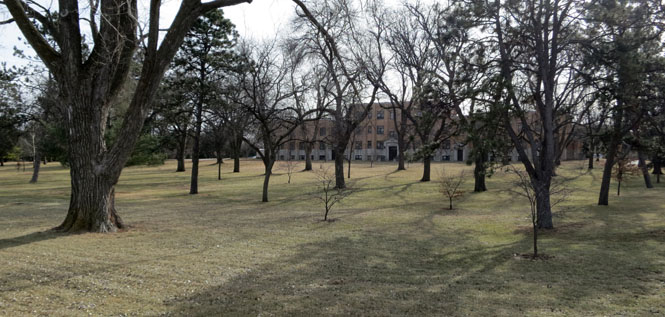January, 2015

The 1870s was a time of extraordinary changes throughout the great plains. Several railroad companies were extending their lines west as fast as they could, while at the same time land that had never seen a plow was being homesteaded at a tremendous rate.
The railroads needed towns and the towns needed the railroads.
And the new towns needed names. After exhausting every last name of the railroad board of directors and every hometown back east, a couple of lines started to get creative. The Burlington & Missouri labeled their towns A-B-C... and then filled in the full names. Evidently the St. Joseph & Denver City thought that was such a good idea they did the same thing.
This would be a ride from A-to-L and then from L-to-A over both of these lines. The towns that start with -J-, -K-, and -L- are shared by both.
 Nebraska
Nebraska
If you look though historical references, you'll see that the names of some of the towns were in flux for a few years even if the ABCs stayed the same. But, by the mid-1870s the names were set:
Asylum [Burlington & Missouri River Railroad]
Berks
Crete
Dorchester
Exeter
Fairmont
Graffton
Harvard
Inland
Juniata
Kenesaw
Lowell
Kenesaw
Juniata
Ingleside
Hastings
Glenvil
Fairfield
Edgar
Davenport
Carleton
Belvidere
Alexandria
[St. Joseph & Denver City Railroad]
I'll be starting with the town of Alexandria, on the St. Joseph & Denver City Railroad.

It is still a busy line. Trains were coming by at least every thirty minutes. Many were hauling coal and the rest general freight.
Alexandria. This is a town that recognizes the history of their name and proudly displays it. Being January, the small creeks are iced. Yes; mornings are cold.

Like nearly all railroad towns in the Great Plains, Main Street extends perpendicular to the tracks (the classic T-town grid).
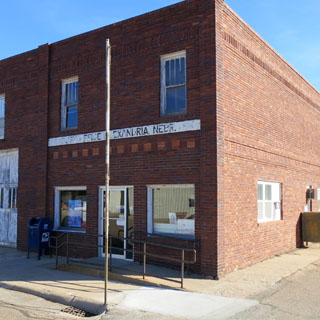

Belvidere.
The folks of Belvidere recognize that there are plenty of people out there who like nothing better than to sit in the shade and watch the trains go by. The town welcomes them.
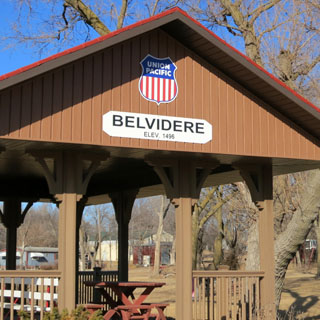
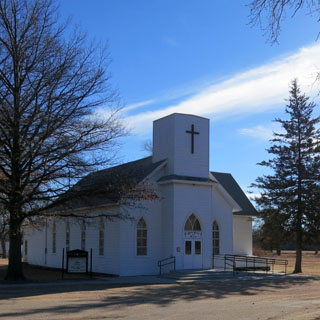
Carleton.
The big locomotives make a lot of noise at the crossings, but they're not going to slow down for any of these towns.
Davenport.
Hauling coal. I assume the empties return on a different route; in any case, I didn't see any going the other direction.
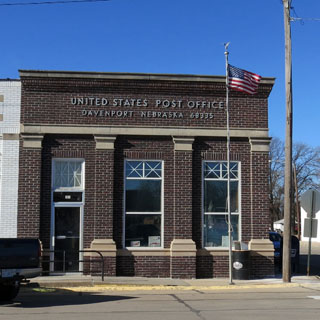

It's more common to see farm houses that look like this than otherwise. It just doesn't take as many people (and as many farms) as it did in 1880.
Edgar.
No matter what make or year your tractor might be, I'm sure parts can be found to keep it running.
The old St. Joseph and Denver City Railway is now the Union Pacific.
Fairfield.
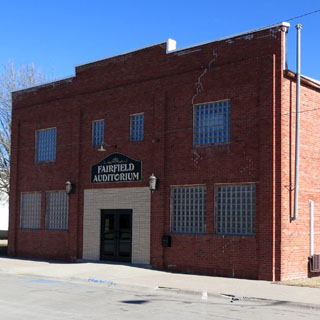
Glenvil.
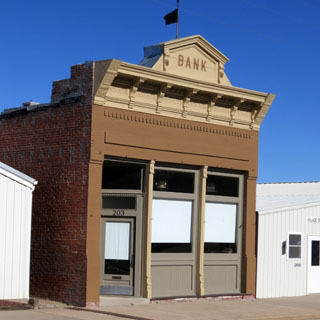
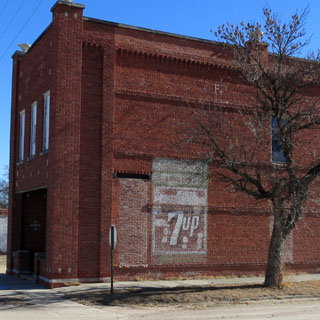
Unpaved residential streets are pretty common.
Hastings is far and away the largest and most successful of the ABC towns.
Ingleside. Where is Ingleside? My coordinates put it right here.
This is it. The Hastings Regional Center has apparently been through a number of names (starting with "State Asylum for the Incurably Insane") and is now a treatment center for Juvenile Chemical Dependency.
The Burlington & Missouri River Railroad is mostly north of the St. Joseph & Denver City, but the two lines converge around here. I believe the -J-, -K-, and -L- towns were created by the Burlington Line.


Juniata.
Kenesaw.
Reaching the final town of Lowell will take a bit more effort--I cannot simply follow the tracks. The tracks have long been relocated elsewhere, and poor Lowell lost out.
Lowell was once a thriving boom town and was even the county seat. Those days are all gone with only an historical sign to remember them by.
Lowell, 1872
The Boom Town played an
important role in the West, and few Nebraska towns had such a boom history
as Lowell. It was selected as a townsite by the Burlington & Missouri River
Railroad in 1871, and its first businesses were soon established.
Lowell first incorporated town in Kearney County, was chosen county seat at
the reorganization election of June 17, 1872. The B&M RR arrived on July 8,
and for a short time it was end-of-track, becoming a major shipping point
for central Nebraska. Also in July, it was selected as the site for the U.S.
Land Office for the Republican Valley, and its streets were crowded with
homesteaders. It was a temporary shipping point for the herds of cattle
trailed north from Texas. The courthouse and land office stood near here.
Lowell’s decline began as early as 1872, when the railroad built on to
Kearney making it the regional trading center, and a wagon bridge built
across the Platte at Kearney in 1874 continued the drop in business. The
removal of the land office in 1874 added to the decline of Lowell. When the
county seat was removed in 1878 a quiet village replaced the boom town. The
school closed in 1963.
--Nebraska Historical Marker in Lowell,
Nebraska
Crossing the Platte River would have been a reason for shifting the route of the railroad. As newer bridges were built, some towns were bypassed and new ones were created. Winners and Losers.
Inland still has a school, but little else.
Harvard.
Graffton.
Fairmont.
I returned to Fairmont the next morning, but as the temperature was still below thirty degrees, I prudently waited in the cafe for things to warm up.

Exeter. You'll see the BN&SF train at the crossing. The Burlington Northern & Santa Fe has folded in the old Burlington & Missouri River Railroad.
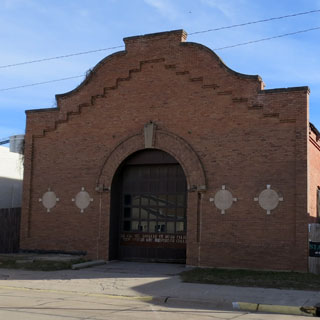
Dorchester.
Crete.
Berks... Where is Berks? I knew this one would be a hard one to find. I had the coordinates of the original town, but no map shows Berks.
Berks is here. Or in any case, Berks used to be here. Today it's a rail siding.

Asylum. We are back to the letter -A- and also curiously at yet another State Lunatic Asylum, these days called the Lincoln Regional Center.
As far as I know, these two lines are the only ones in Nebraska named this way. But, I can only guess that there were other--perhaps less obvious--schemes to come up with the dozens and dozens of other names. It's not hard to find a compelling reason to go for a ride.

